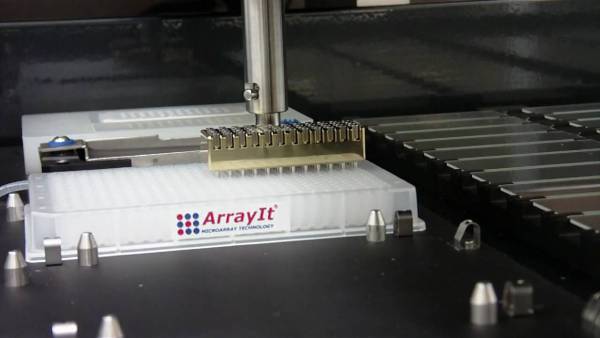The advancements in microarray technology has allowed further development in diagnosis of illnesses and diseases. With the features available, researchers can easily discover effects and changes in the genome through administrating different drugs and medicines. Microarrays have led researchers to more information about the biological samples faster than before.
Researchers are starting to appreciate all the information that arrays and sequencing provide them with. The same applies to the instruments used. Scanners and software are one of the most important instruments that accompany microarrays boost their research.
Tools and Types of Microarrays
Today, the advancements in the use of microarrays detect and measure the gene expression, measure protein levels and detect any form of mutation. There are also various instruments that researchers use to get the best, most well informed results out of microarray technology.

There are three types of micro arrays used for research and two main instruments that are required to get the best results. They are listed below.
Scanners
There is a vast range of scanners that assist scientists in their research by using the correct scanning system. With a proper scanner, there are a series of functions that a scientist can accomplish. Other than a deeper analysis, researchers can add follow on targeted sequencing data to their wide range of genomic related studies and gain a more content for a more detailed analysis. Scanners also allow researchers to combine the array based gene expression data and sequencing for comparison. Scanners also allow researchers to choose the right level and scale of automation.
Software
Another important ingredient to a successful microarray is the software. It helps researchers accomplish their goals more efficiently and with more insightful information. Software allows the researchers to view and analyze the generated microarray data. The proper software lets the researchers convert data into meaningful analysis and results.
Types of Microarrays
Scientists and researchers in the biotechnology industry are developing more and more microarrays. They are making them more compatible with instruments and systems used to access the information the DNA strands contain.
There are three main types of microarrays that are used by researchers and scientists. They are as follows:
- Oligo Microarrays –
DNA microarray has a probe that is the chemically synthesized oligo DNA. Since the probe is shorter, than a cDNA microarray, researchers have to face a high specifity and it inhibits hybridization.
- cDNA Microarrays –
A collection of cDNA fragments that are reverse transcripts of gene transcription products (mRNA). The length of cDNA generally differ, rather than staying the same, they alternate.
- BAC clone chips –
A DNA microarray that has a probe which is a template amplified by PCR. A BAC clone chip is used to research upon and understand the number of genomic DNA copies in various methods.
The Data given by the microarrays was found to be useful not only because of detail but because of the volume of data they are able to carry. Because of them, scientists are able to get detailed insight into diseases like Cancer and find a cure.
Ainsley Ross is a researcher, studying and working with microarrays. He recommends arrayjet.co.uk for high quality microarray services.

